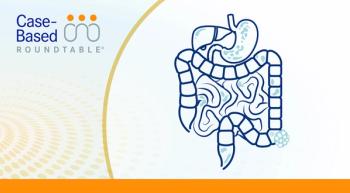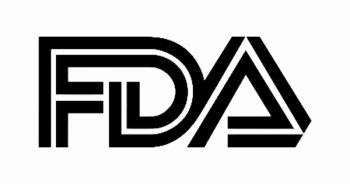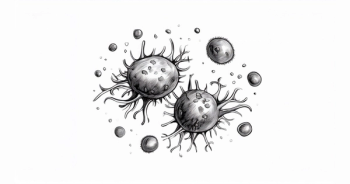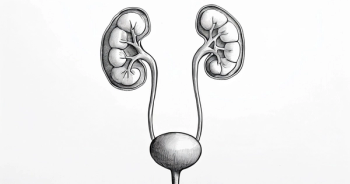
Isa-KRd Deepens MRD Negativity in High-Risk NDMM
The IsKia trial reveals that isatuximab enhances MRD negativity in newly diagnosed multiple myeloma, especially in high-risk patients.
The phase 3 IsKia trial (NCT04483739), presented at the 2025 European Hematology Association Congress, demonstrates that adding isatuximab-irfc (Sarclisa) to the carfilzomib (Kyprolis), lenalidomide (Revlimid), and dexamethasone (KRd) regimen (Isa-KRd) significantly increases the rate of 1-year minimal residual disease (MRD) negativity at a stringent sensitivity of 10–6 in patients with newly diagnosed multiple myeloma (NDMM), particularly those with high-risk or very high-risk disease.
At a threshold of 10–5 after full-dose consolidation in the Isa-KRd (n = 151) and KRd (n = 151) arms, respectively, the MRD-negative rates were 77% vs 67% after full-dose consolidation (OR, 1.67; P =.049) and 79% vs 74% after light consolidation. At a threshold of 10–6, the respective MRD-negative rates in each arm were 68% vs 48% after full-dose consolidation and 74% vs 64% after light consolidation (OR, 1.63; P =.055).1
MRD-negative status was sustained for 1 year in 66% of the Isa-KRd arm and 59% of the KRd arm at a threshold of 10–5; these rates were 52% vs 38% at a threshold of 10–6 (OR, 1.82; P =.012). Treatment with Isa-KRd improved 1-year sustained MRD negativity vs KRd across patient subgroups at a cut-off of 10–6, which included those with high-risk disease (44% vs 31%; OR, 1.74), 2 or more high-risk cytogenetic abnormalities (62% vs 20%; OR, 6.30), and second revision of the International Staging System (R2-ISS) stage III or IV disease (47% vs 35%; OR, 1.73).
Investigators noted functional high-risk status, defined as progressive disease before 18 months from randomization, in 3% of patients who received Isa-KRd and 4% of those who received KRd. Additionally, 6% of patients from both arms had functional high-risk status and/or preprogression or deaths.
“Isa-KRd significantly increased the rate of 10–6 1-year sustained MRD negativity, as compared with KRd, even among high-risk and very high-risk patients,” Francesca Gay, MD, PhD, an associate professor in the University of Torino Department of Molecular Biotechnology and Health Sciences, and a hematologist at the Division of Hematology and SSD Clinical trials in onco-hematology and multiple myeloma at Azienda Ospedaliero-Universitaria Città della Salute e della Scienza in Torino, Italy, stated in the presentation.1 “The rate of early relapse was low in both arms, supporting the effectiveness of the second-generation [proteasome inhibitor] carfilzomib in this setting….When comparing highly effective regimens, the 10–6 MRD negativity cut-off was more informative than the 10–5 MRD negativity cut-off.”
Across 42 active sites in the IsKia trial, patients 70 years or younger with transplant-eligible NDMM were randomly assigned to receive induction therapy with Isa-KRd or KRd alone in four 28-day cycles. Treatment included isatuximab at 10 mg/mg intravenously on days 1, 8, 15, and 22 of cycle 1 followed by 10 mg/kg on days 1 and 15 of cycles 2 to 4; carfilzomib at 20 mg/m2 on day 1 of cycle 1 followed by 56 mg/m2on days 8 and 15 of cycle 1 and days 1, 8, and 15 of cycles 2 to 4; lenalidomide at 25 mg daily on days 1 to 21; and dexamethasone at 40 mg on days 1, 8, 15, and 22.
Following induction therapy, patients underwent mobilization with cyclophosphamide at 2 to 3 g/m2 followed by G-CSF for stem cell collection and melphalan at 200 mg/m2 plus autologous stem cell transplantation. Additionally, patients underwent post-ASCT full-dose consolidation therapy with Isa-KRd or KRd alone for four 28-cycles followed by light consolidation therapy in twelve 28-day cycles.
The trial’s primary end point was the rate of MRD negativity following ASCT consolidation therapy per next-generation sequencing (NGS).2 Secondary end points included post-induction MRD negativity per NGS, progression-free survival, overall response rate, duration of response, overall survival, and safety.
At the time of light consolidation therapy in the Isa-KRd (n = 126) and KRd arms (n = 136), the median age was 61 years (IQR, 54-66) compared with 60 years (IQR, 54-64), and most patients were male (54% vs 56%). Additionally, most patients in each arm had standard cytogenetic risk (85% vs 83%), 0 high-risk cytogenetic abnormalities (56% vs 54%), R-ISS stage II disease (59% vs 58%), and R2-ISS stage II (35% vs 34%) or stage III disease (34% vs 36%).
Grade 1/2 hematologic toxicities in the Isa-KRd arm and KRd arm included anemia (6% vs 6%), neutropenia (9% vs 7%), and thrombocytopenia (8% vs 11%); grade 3 neutropenia affected 17% and 15% of patients in each arm. Regarding non-hematologic toxicities, the most common grade 1/2 events in each arm included COVID-19 (20% vs 24%), respiratory tract infection (21% vs 10%), diarrhea (18% vs 14%), and asthenia or fatigue (12% vs 12%).
Patients in the Isa-KRd arm discontinued therapy due to grade 3 nausea (n = 1), grade 3 cytomegalovirus chorioretinitis (n = 1), grade 3 dyspnea (n = 1), and grade 3 mood changes (n = 1). Additionally, those in the KRd arm discontinued treatment due to grade 4 myelodysplastic syndrome with multilineage dysplasia (n = 1), grade 3 hepatitis B reactivation (n = 1), and grade 2 decreased appetite (n = 1).
Two patients in the Isa-KRd arm died due to pulmonary embolism (n = 1) and ischemic cerebral infarction (n = 1). Additionally, 1 patient in the KRd arm died due to cardiac arrest with an unknown cause at home.








































